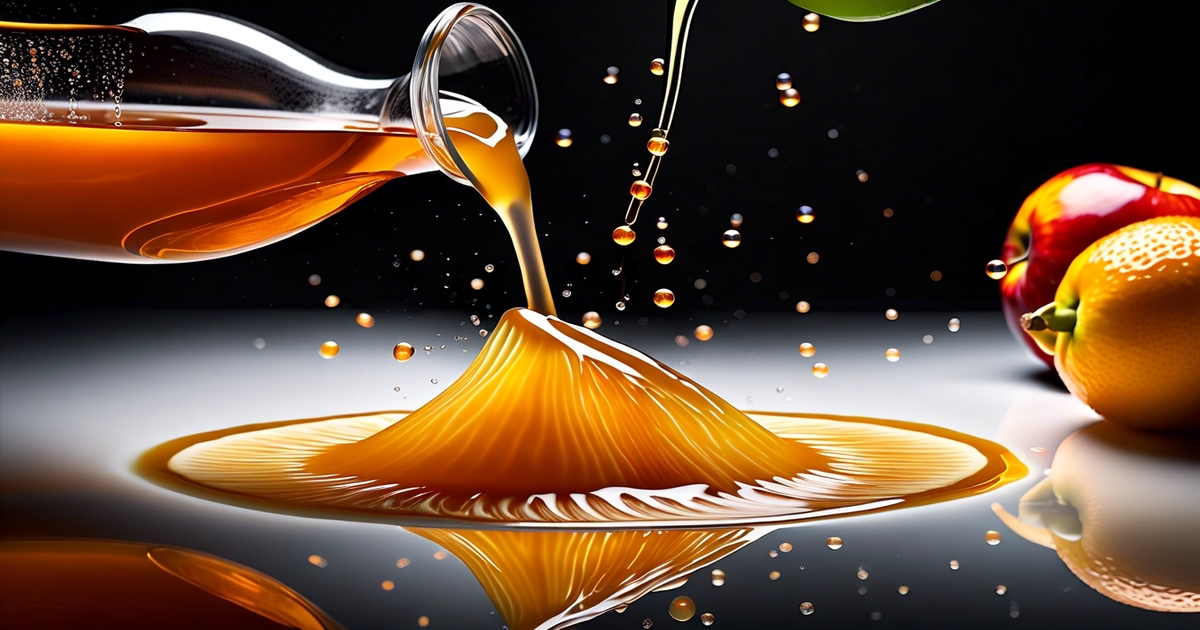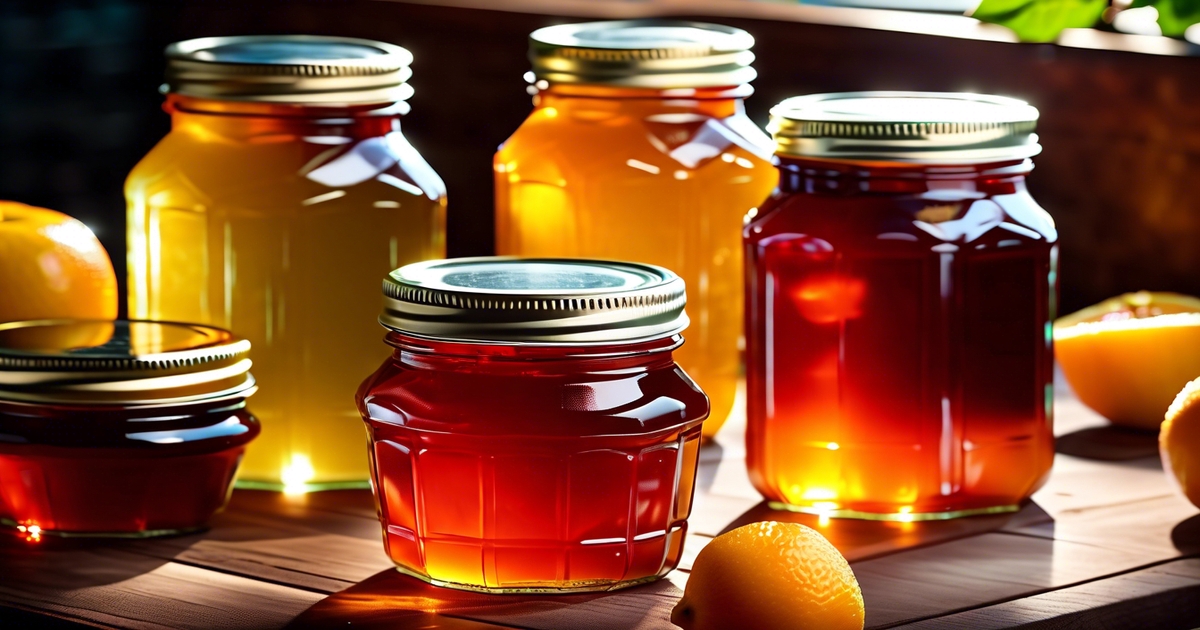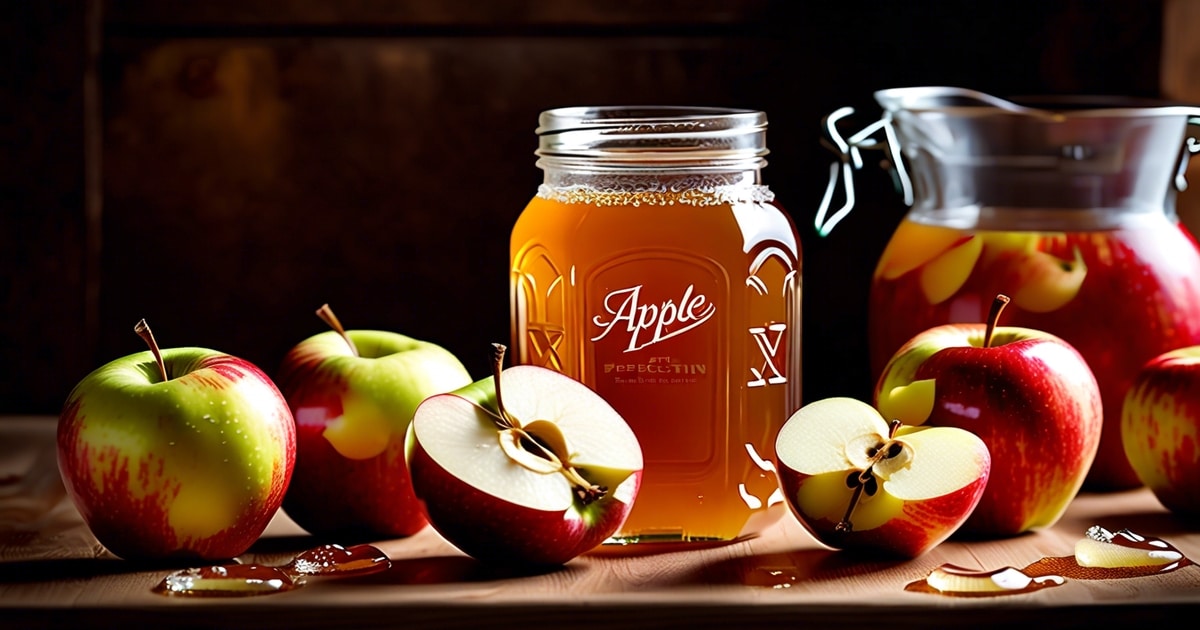Key Takeaways
- Understand the importance of pectin in cooking and its role in creating jams and jellies.
- Choose apples rich in pectin, like Granny Smith or Bramley, for optimal pectin extraction.
- Follow a simple homemade apple pectin recipe using apple scraps to create your own pectin at home.
- Test the readiness of your pectin using the plate or freezer test to ensure the desired consistency.
- Store your homemade pectin properly in airtight containers or freeze it for long-term use.
- Experiment with incorporating apple pectin in various recipes to add thickness and improve texture.
Learn how to make apple pectin at home easily. This traditional method goes back a long way and gives you a natural ingredient for cooking. Using apples, you can create your own healthy pectin full of taste and nutrients. Try this simple process to expand your cooking options. Improve your skills and have fun making homemade apple pectin for new cooking adventures.
Pectin Essentials Explained
What is Pectin?
Pectin is a natural starch in fruits and vegetables, acting as a thickening agent. It is commonly extracted from apples, citrus fruits, and berries.
Pectin plays a crucial role in the culinary world by enabling jams and jellies to achieve their desired semi-solid consistency. When heated with sugar and acid, pectin forms a gel-like structure that gives these spreads their characteristic texture.
Culinary Applications of Pectin

- Jams and Jellies: Pectin is widely used in making jams and jellies because it can set liquid mixtures into solid forms.
- Fruit Preserves: Adding pectin to fruit preserves helps maintain the shape and texture of the fruit while enhancing flavor.
- Yogurts: Some yogurt brands incorporate pectin as a stabilizer to prevent whey separation, resulting in a creamy and consistent product.
Pectin can also be used in baking to thicken pie fillings or create fruit glazes. Its versatility extends beyond sweet treats; savory dishes like sauces and soups can benefit from pectin’s thickening properties.
Source and Importance of Pectin
Origin of Pectin
Pectin, a soluble fiber found in fruits, is mostly found in the rinds, seeds, and membranes. These parts are rich in pectin due to their high fiber content.
Fruits Rich in Pectin
Apples, quince, and various citrus fruits are good sources of pectin. Due to their high pectin content, they are commonly used in making jams and jellies.
Importance of Using Bitter, Unripe Apples
When making homemade pectin, it is crucial to use bitter, unripe apples. These apples have higher levels of pectin compared to ripe ones, which is essential for achieving the desired gel-like consistency in jams and preserves.
Selecting Apples for Pectin
Optimal Varieties
Due to their high pectin content, sour or crab apples are recommended for making apple pectin. These varieties ensure a more efficient extraction process, resulting in a higher yield of pectin.
Utilizing Scraps
When making apple pectin, consider using apple scraps like peels and cores. These parts contain a lot of pectin, contributing to the production process. By utilizing these scraps, you can reduce waste and maximize your pectin yield.
Suitable Apple Varieties
Certain apple varieties, such as Bramley apples, are ideal for homemade pectin. Bramley apples are known for their high acidity and strong flavor profile, which makes them perfect for creating flavorful and effective apple pectin at home.
Homemade Apple Pectin Recipe
Ingredients
To make apple pectin, you will need apples, either quartered or just the peels and cores, along with water.
Cooking Process
Begin by boiling the apples in a pot filled with water. Let them simmer for 1.5 to 2 hours until they turn soft and mushy.
Visual Cues
When making homemade pectin, look for visual cues, like the apple pieces breaking down easily when pressed against the side of the pot. The liquid should also thicken slightly.
Testing Pectin Readiness
Chilling Method
Chill a small amount of the pectin solution in methylated spirits to test pectin readiness. If it forms a gel-like consistency, your pectin is ready for use.
Storage Instructions
Store homemade pectin by freezing it in ice cube trays or canning it in glass jars. Freezing maintains freshness, while canning ensures long-term preservation.
Caution Against Consumption
Avoid ingesting the testing solution, as methylated spirits are toxic. Exercise caution and keep it away from children and pets.
Storing Your Homemade Pectin

Refrigerator Storage
After making apple pectin, it’s crucial to store it correctly for future use. Transfer the homemade pectin into sterilized jars before placing them in the refrigerator. This step ensures that your pectin stays fresh and usable for a long time.
Shelf Life Recommendation
For optimal quality, consume your stored homemade pectin within approximately 6 weeks. Beyond this timeframe, the effectiveness and flavor of the pectin may start to deteriorate. Regularly check the stored jars for any signs of spoilage or changes in texture.
Importance of Jar Sterilization
Proper jar sterilization is key to maintaining the freshness and longevity of your homemade apple pectin. Before storing the pectin, ensure that the jars have been thoroughly cleaned and sanitized. This process helps prevent contamination and extends the shelf life of your preserved product.
Utilizing Apple Pectin in Recipes
Ratios for Jams and Jellies
The ideal ratio of apple pectin to fruit or juice is crucial when making jams and jellies. To ensure perfect consistency, aim for around 1 tablespoon of natural pectin per cup of fruit or juice.
Sweetening Your Creations
For those diving into recipes with apple pectin, remember this golden rule: combine equal amounts of sugar with the pectin and juice. This balance guarantees the right level of sweetness while allowing the pectin to work its magic.
Versatility in Culinary Delights
Homemade apple pectin opens up a world of possibilities beyond just jams and jellies. Consider infusing your sauces with a touch of homemade pectin for that extra hint of natural thickness without altering the flavors significantly.
Additional Pectin Insights
Homemade Apple Pectin
Making apple pectin at home is a simple process that involves using apple peels and cores. By simmering these scraps in water for an extended period, the natural pectin in the fruit is extracted.
Benefits of Using Homemade Pectin
One advantage of homemade pectin is its purity; there are no added preservatives or artificial ingredients. This makes it ideal for individuals looking to create jellies and jams with a more natural touch.
Extracting Process Details
To extract apple pectin effectively, consider using a steamer pot. The steam helps break down the apple pieces, releasing more pectin into the liquid. The longer you let it heat, the better the result.
Usage Tips and Tricks
When storing your homemade pectin, ensure it’s kept in a sterilized jar to prevent contamination. Adding a small amount of alcohol can help preserve the product for longer periods.
Closing Thoughts
You know how to make apple pectin at home. Pick the right apples, follow the recipe, and check if it’s ready. Storing it well and trying different recipes will make your cooking better with this natural thickener.
Now it’s time to roll up your sleeves, head to the kitchen, and experiment with your homemade apple pectin. Whether you’re making jams or jellies or adding a twist to savory dishes, incorporating this pectin will not only boost the flavor but also showcase your culinary expertise. Get creative, have fun, and savor the delicious results!
Frequently Asked Questions
How important is pectin in cooking and food preservation?
Pectin is crucial in making jams, jellies, and preserves as it acts as a natural gelling agent. It helps thicken fruit spreads and enhance their texture, ensuring a perfect consistency for your culinary creations.
Can I use any type of apple to make homemade pectin?
Select apples rich in pectin, like Granny Smith or crab apples, for optimal results when making homemade pectin. These varieties contain higher levels of natural pectin, which aids in the gelling process during cooking.
How do I know if my homemade apple pectin is ready for use?
To test the readiness of your apple pectin, perform a simple plate test by spooning a small amount onto a chilled plate. If the mixture sets and forms a gel-like consistency upon cooling, it’s ready to be used in your recipes.
What are some creative ways to incorporate apple pectin into recipes?
Utilize your homemade apple pectin in various recipes such as fruit jams, jellies, sauces, or even as a thickening agent for desserts like pies or puddings. Its natural gelling properties can elevate the texture and flavor of your dishes.
Is storing homemade apple pectin necessary? If so, how should it be stored?
Properly store your homemade apple pectin by refrigerating it for short-term use or freezing it for a longer shelf life. Use sterilized jars or containers with tight-fitting lids to maintain freshness and prevent spoilage.

